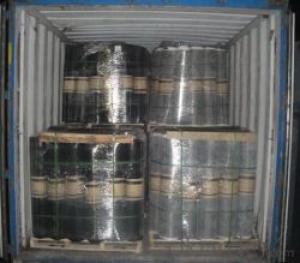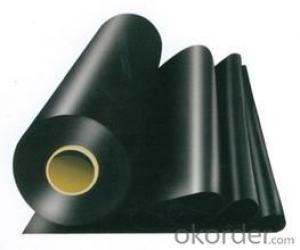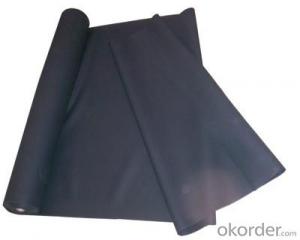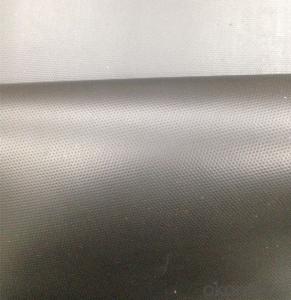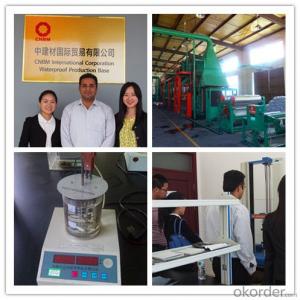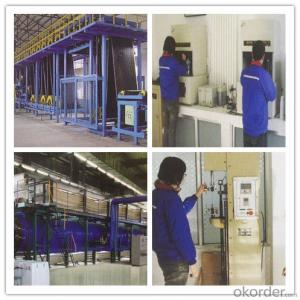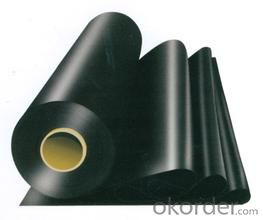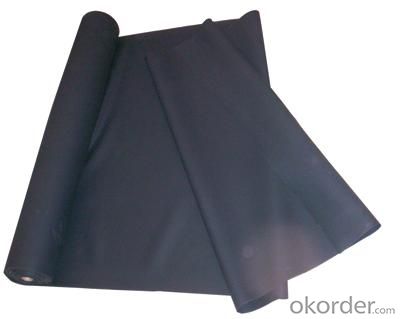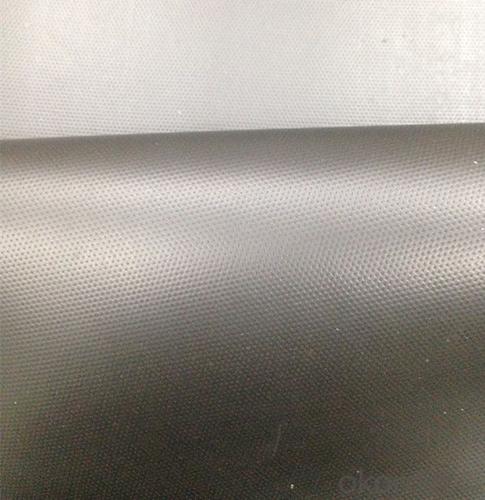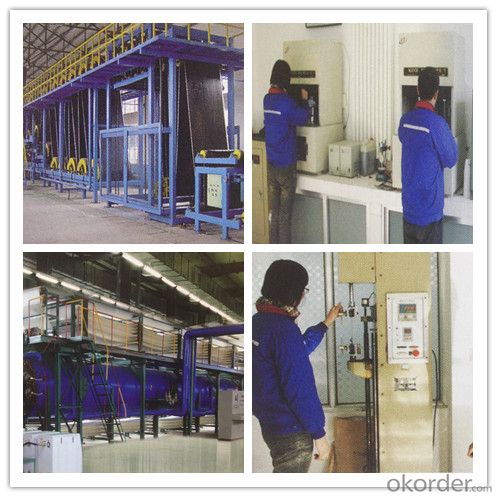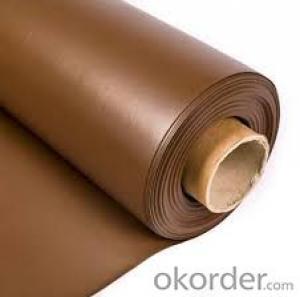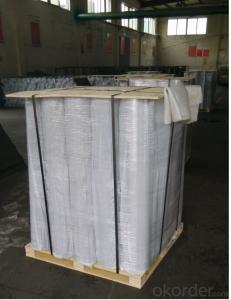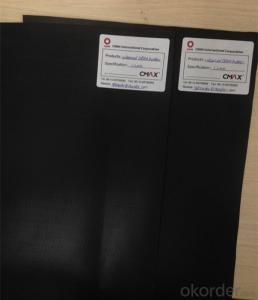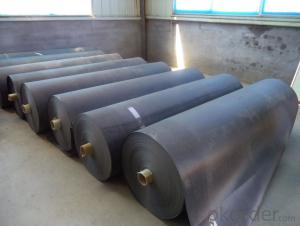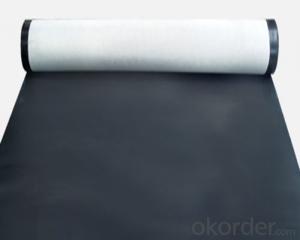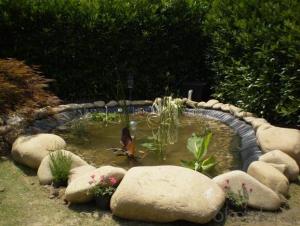EPDM Rubber Waterproof liner Good Elongation for roof
- Loading Port:
- Qingdao
- Payment Terms:
- TT OR LC
- Min Order Qty:
- 3500 m²
- Supply Capability:
- 250000 m²/month
OKorder Service Pledge
OKorder Financial Service
You Might Also Like
EPDM Rubber Waterproof Membrane
Product Instruction:
EPDM waterproof membrane is made from ternary ethylene-propylene rubber,which is designed for waterproofing of exposed and non-exposed applications. EPDM waterproof membrane is of high elasticity among high polymer waterproof materials and becomes a world-popular waterproofing material.
CNBM own the wold-advanced equipment of cold feeding extrusion and continuous vulcanization technology. With the best performance among high polymer waterproof materials, EPDM is of exceptional elasticity and will not split or cracked under normal building movement.
Product Features:
-Excellent weather-ability, durability and size stability
-Good adaptability to high and low temperature, UV resistant and anti-corrosion
-High tensile strength and good elongation, accommodating to structure movement
-Easy installation, solid joint, and mo environmental pollution
-Good rooting penetration resistance
-Service life up to 50 years
Applications:
-Roof, basement, tunnel, pond liner, dam
-Industrial and civil building waterproofing
-Geosynthetic liner for fish ponds, swimming pools, channels, irrigation system
-Especially suitable for projects with high requirement in durability, anti-corrosion and deformation
Specifications:
-Width of roll: 1.2m, 2m, 4m
-Length of roll: 20m, 30m or customized
-Thickness of membrane: 1.2mm, 1.5mm, 2mm
-Type: vulcanized EPDM or welding EPDM
-Application: roof, basement, pond, lake, swimming pool, steel structure roofing, underground, tunnel, etc
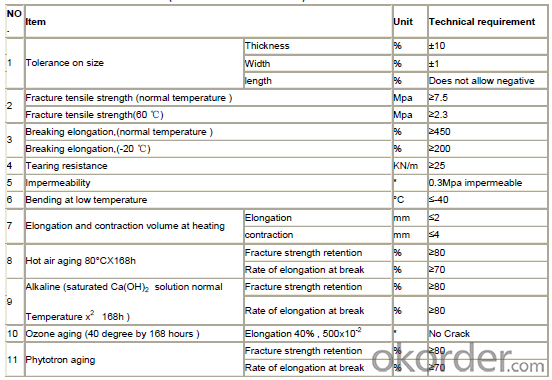
FAQ:
1. Is your EPDM waterproof membrane the real rubber?
Yes, our EPDM membrane is made from top quality rubber, which is imported from America. We support samples for testing, or testing in our factory.
2. How's your products quality?
Our EPDM is with the top quality at home and abroad. Our quality is much higher than Chinese standard. Our product is widely used in Chinese Central government projects. And it's also accpted by customers all over the world, such as EU, USA, Astrulia, etc.
3. What's the service life of your EPDM membrane?
The service life of our EPDM membrane is more than 50 years.
4.What's your MOQ?
Our MOQ is 3000M2.
5. What's your product ability of EPDM membrane?
We own the largest EPDM production line in China. Our product ability of EPDM membrane reaches 2 million square meter per year.
Photos:
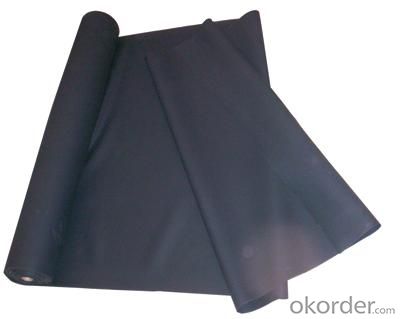
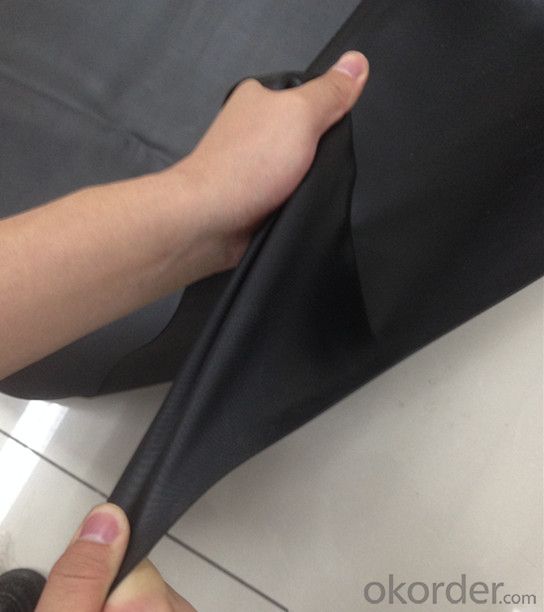
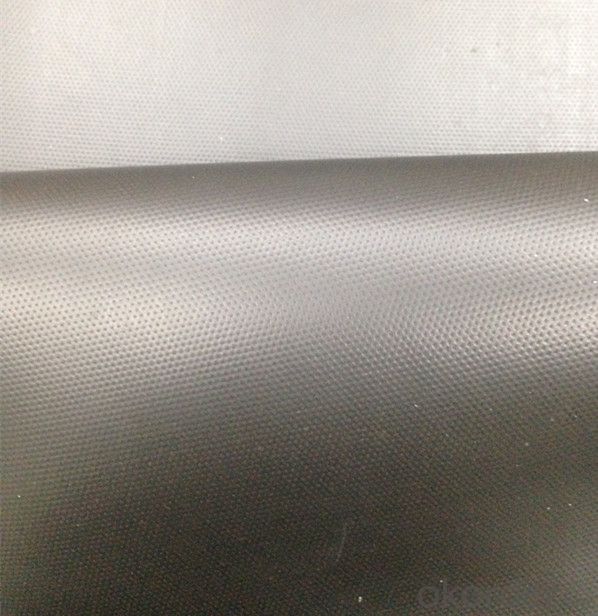


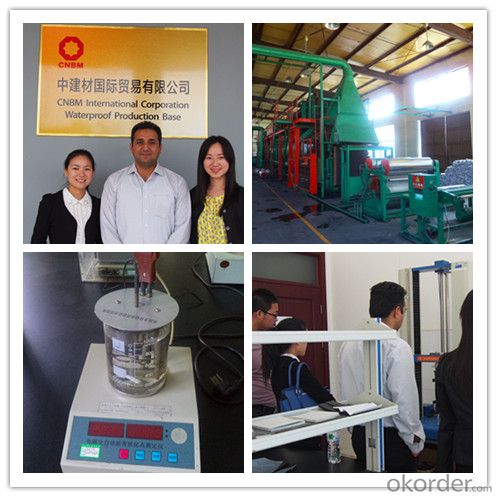

- Q: How does a waterproofing membrane adhere to a variety of surfaces?
- A waterproofing membrane adheres to a variety of surfaces by utilizing a strong adhesive backing or by being applied with a suitable adhesive. This allows it to bond effectively to different materials such as concrete, wood, metal, or even existing waterproofing layers. Additionally, some membranes may also have self-adhesive properties that eliminate the need for an external adhesive.
- Q: Can a waterproofing membrane be used in areas with high humidity?
- Yes, a waterproofing membrane can be used in areas with high humidity. The membrane is designed to prevent water penetration, including moisture from high humidity levels. It acts as a barrier, protecting the underlying surfaces from water damage, mold, and mildew.
- Q: How do waterproofing membranes prevent water leakage?
- Waterproofing membranes are designed to prevent water leakage by creating a barrier between the surface and the water. These membranes are typically made of materials such as bitumen, PVC, or EPDM, and are applied to the surface in a liquid or sheet form. The primary way in which waterproofing membranes prevent water leakage is by forming a continuous and impermeable layer. This layer acts as a physical barrier that prevents water from seeping through the surface. The membranes are applied in such a way that they cover the entire surface, including joints, cracks, and seams, ensuring that there are no areas vulnerable to water penetration. Additionally, waterproofing membranes often have excellent adhesive properties, allowing them to bond tightly to the surface. This ensures that there are no gaps or spaces where water could enter. By adhering tightly to the surface, the membranes also provide protection against the movement of water vapor, preventing moisture buildup and potential damage to the structure. Furthermore, waterproofing membranes are specifically designed to be highly resistant to water and moisture. They are made from materials that do not degrade or deteriorate when exposed to water, ensuring their longevity and effectiveness. This resistance to water also helps to prevent the membrane from becoming permeable over time. In summary, waterproofing membranes prevent water leakage by creating a continuous and impermeable barrier on the surface. They cover the entire surface, adhere tightly to prevent gaps, and are resistant to water and moisture. By implementing these measures, waterproofing membranes provide reliable protection against water infiltration and subsequent damage.
- Q: Can a waterproofing membrane be used on adobe block surfaces?
- Yes, a waterproofing membrane can be used on adobe block surfaces. Waterproofing membranes are commonly used to provide an additional barrier against water penetration and moisture damage, and they can be applied to various surfaces, including adobe blocks, to enhance their water resistance and durability.
- Q: Can a waterproofing membrane be painted or coated?
- Yes, a waterproofing membrane can be painted or coated. However, it is important to use a paint or coating specifically designed for waterproofing membranes to ensure proper adhesion and durability.
- Q: Can waterproofing membranes be used on parking decks?
- Yes, waterproofing membranes can be used on parking decks. Waterproofing membranes are commonly used in construction projects to prevent water penetration, and they are particularly useful for protecting structures such as parking decks from moisture damage. These membranes are applied to the surface of the deck, providing a barrier against water and preventing potential issues like leaks, cracks, and deterioration caused by moisture.
- Q: Can a waterproofing membrane be used in agricultural structures?
- Yes, a waterproofing membrane can be used in agricultural structures. It can help protect the structure from water damage, prevent moisture-related issues, and ensure a longer lifespan for the agricultural building.
- Q: Are waterproofing membranes resistant to punctures?
- Waterproofing membranes are created to resist punctures. These membranes are typically constructed from strong materials like polyvinyl chloride (PVC), thermoplastic olefin (TPO), or ethylene propylene diene terpolymer (EPDM), which are renowned for their durability and ability to endure external pressures. Moreover, polyester or fiberglass is often incorporated into the waterproofing membranes to further strengthen their resistance to punctures. Nevertheless, it is crucial to acknowledge that while these membranes are designed to be highly resistant to punctures, they can still be vulnerable to damage if exposed to sharp objects or excessive force. Therefore, it is imperative to handle and install these membranes with caution in order to uphold their integrity and effectiveness.
- Q: What is the best waterproofing membrane for my project?
- The best waterproofing membrane for your project depends on several factors such as the type of project, location, budget, and specific requirements. It is recommended to consult with a professional waterproofing expert who can assess your project's needs and recommend the most suitable membrane based on these factors.
- Q: Can a waterproofing membrane be used on tunnels?
- Yes, a waterproofing membrane can be used on tunnels. Tunnels are often subjected to high levels of moisture, groundwater infiltration, and potential leaks. Therefore, it is crucial to protect them from water damage and ensure their long-term structural integrity. Waterproofing membranes are commonly used in tunnel construction to prevent water penetration and provide an effective barrier against moisture. These membranes are designed to be durable, flexible, and resistant to various environmental conditions, making them suitable for use in tunnels. They can be applied to the tunnel walls, roof, and floor to create a waterproof seal, ensuring that the tunnel remains dry and protected from water-related issues such as corrosion, deterioration, and mold growth. Additionally, waterproofing membranes can also help in reducing maintenance costs and extending the lifespan of the tunnel infrastructure.
Send your message to us
EPDM Rubber Waterproof liner Good Elongation for roof
- Loading Port:
- Qingdao
- Payment Terms:
- TT OR LC
- Min Order Qty:
- 3500 m²
- Supply Capability:
- 250000 m²/month
OKorder Service Pledge
OKorder Financial Service
Similar products
Hot products
Hot Searches
Related keywords
